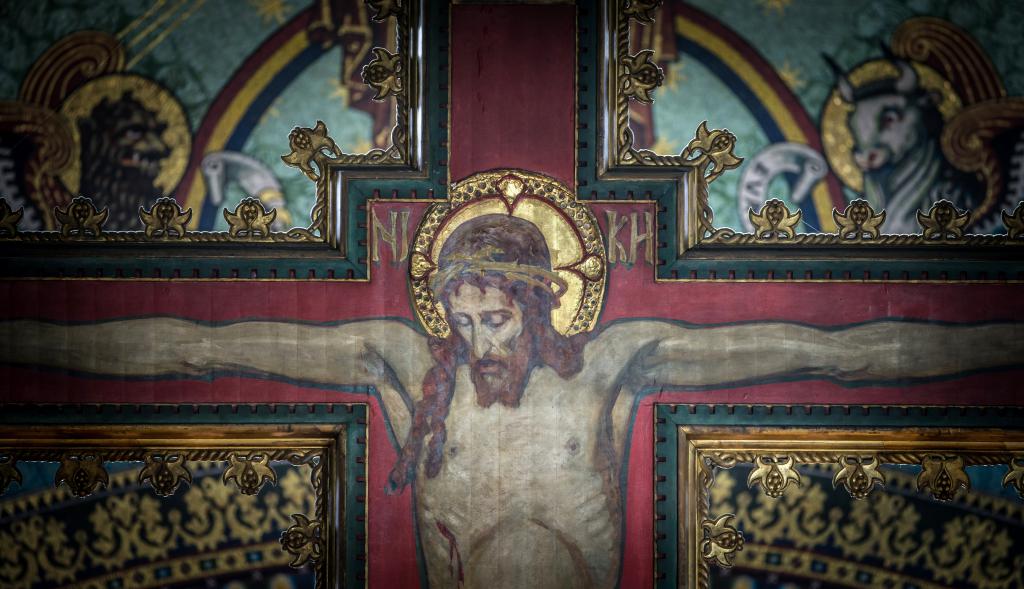By Peter Stevens
This term’s concert given by the Cathedral Choir and Orchestra, conducted by Martin Baker, brings together popular masterpieces from the 17th and 20th centuries with a powerful meditation on the Passion from one of the leading composers of our time.
Gregorio Allegri was a priest who spent most of his life in Rome. His early musical education came from his years as a chorister in the church of San Luigi dei Francesi, and he went on to compose a substantial body of sacred music, including a large number of motets. After his ordination, Pope Urban VIII appointed him to the Sistine Chapel Choir as a contralto. He was known as a good and holy man; half a century after Allegri’s death, one of his pupils spoke warmly of his teacher: ‘In addition to his virtue, he had a singularly good nature. He gave generous alms to the poor, who were always on his doorstep, as well as to prisoners, whom he visited daily.’
As well as his sacred music, Allegri is credited with writing the earliest surviving example of a string quartet. However, despite his considerable output, he is remembered primarily for one piece whose compositional history is dubious, to say the least: his Miserere. A setting of Psalm 50 in the Vulgate, it has become one of the best-known pieces in the entire choral repertoire. An aura of mystery grew up around the work almost immediately, to such an extent that the Vatican banned its publication or any copies being circulated outside the Sistine Choir. Famously, however, a fourteen-year-old Mozart heard it twice on a trip to Rome and transcribed it from memory!
The Miserere is scored for three separate groups of voices: the main choir in five parts, an echo choir in four parts, and a third group to sing verses of plainsong in between the polyphonic verses. The spatial possibilities of this scoring are well served by Westminster Cathedral, with its galleries, apse, and side chapels. At the time of the work’s composition, the convention was for the performers to elaborate freely on what was actually written in the score. Mozart’s transcription is fairly plain, without the famous top C; this, along with the unexpected change of key in the quartet’s verses, is thought to date from as late as the 1880s. Regardless of who wrote it, or of its haphazard evolution over the centuries, Allegri’s Miserere is a deeply evocative piece of music, and the perfect soundtrack to Lent.
The Fantasia on a theme of Thomas Tallis by Ralph Vaughan Williams was written in 1910, and first performed on 10th September that year in the spacious setting of Gloucester Cathedral, conducted by the composer. The premiere was a great success, and the work has remained popular ever since. The theme on which the work is based is a hymn tune written in 1567 by the renaissance master Thomas Tallis. His long life straddled the English Reformation and, despite the religious persecutions that raged throughout during his lifetime, Tallis remained a Roman Catholic. Nevertheless, he contributed nine hymn tunes to the Psalter compiled by the Protestant Archbishop of Canterbury, Matthew Parker.
Using Tallis’s tune as his starting point, Vaughan Williams builds it into a substantial piece scored for string orchestra. Like the Allegri, it is conceived for three separate groups of performers: the main orchestra, a solo quartet, and a small group positioned away from the other players. The expansive opening chords were written to blossom in the generous acoustic of Gloucester Cathedral, and Westminster Cathedral will provide a similarly sympathetic setting. With its cool lyricism, impassioned climaxes and sheer beauty, the Fantasia is a wonderful example of the English pastoral tradition.
The emotional impact of Sir James MacMillan’s Seven Last Words From the Cross has made it a modern classic, and it has been referred to as the composer’s masterpiece. Commissioned by BBC Television and screened in seven nightly episodes during Holy Week in 1994, the work is composed for eight-part choir and strings. The text is the traditional sequence of Christ’s words spoken from the Cross, compiled from all four of the Gospels, but interspersed with texts drawn from the Holy Week liturgies. Each movement has its own identity: of the many highlights are the opening string idea, upon which the first movement is based, the heart-rending beauty of Venite adoremus in the third movement, and the parched desolation of the fifth movement, ‘I thirst’.
The composer uses silence to great effect throughout the work; the opening choral declamations of the second movement are balanced with long periods of silence. Above all, however, the seventh movement is profoundly affecting. The choir opens with the text, ‘Father, into thy hands I commend my Spirit’, descending into darkness before the strings take over and complete the work alone. MacMillan explains that, at this point, ‘liturgical detachment breaks down and gives way to a more personal reflection: hence the resonance here of Scottish traditional lament music’. The writing builds in intensity before the violins settle on a high-pitched cluster, where they are left stranded. Their sighs get shorter and quieter, with longer and longer silences between each one: a vivid reflection of the final shallow breaths of the dying Christ.
The performance takes place on Wednesday 29th March at 7:30pm. Tickets are available from the Cathedral Gift Shop, or from www.ticketmaster.co.uk.
Peter Stevens is Assistant Master of Music at Westminster Cathedral.
Photo: Mazur/Catholicnews.org.uk




